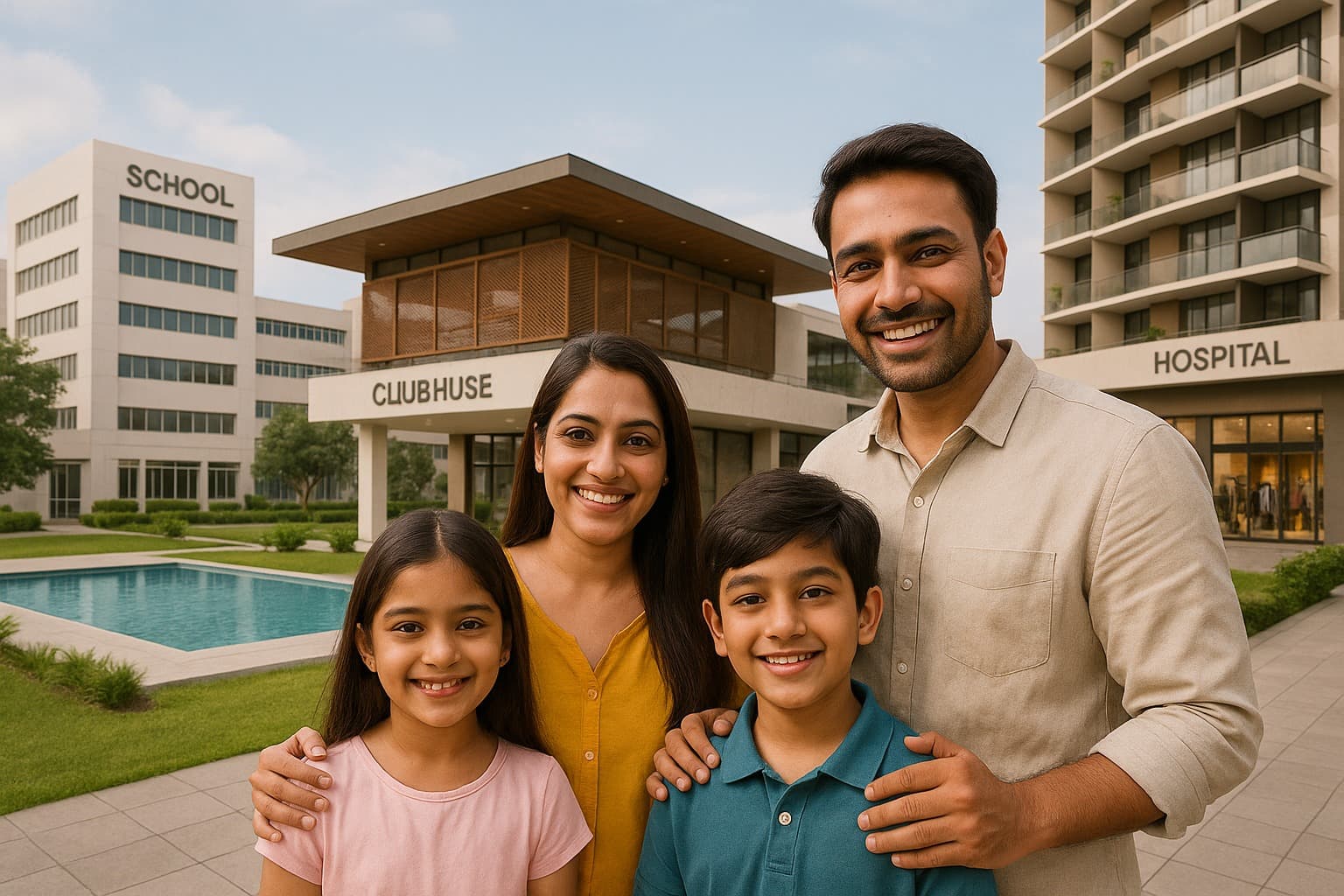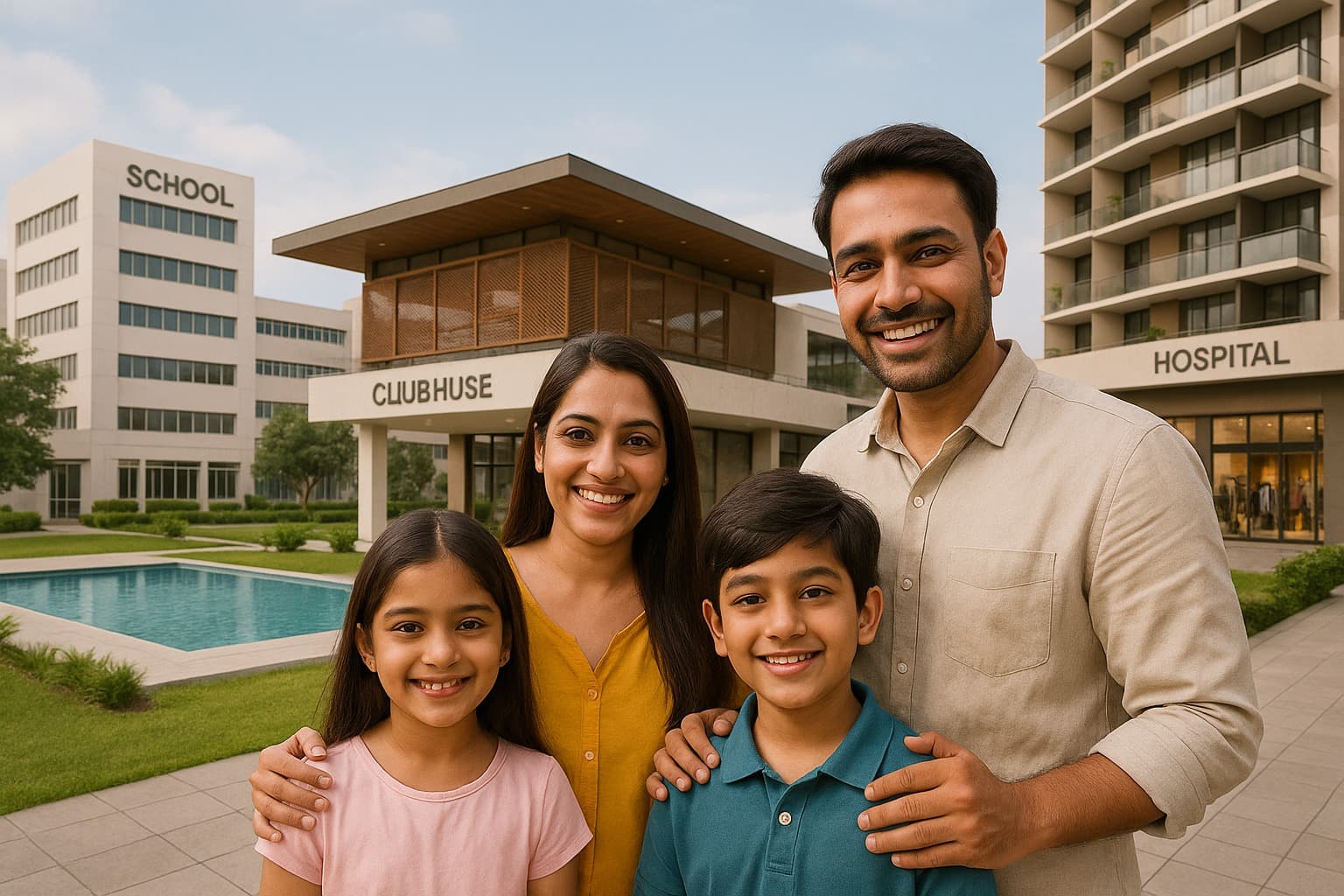Why Developers Focus on Integrated Projects: The Rise of Township Living in India
Summary
Indian developers are shifting to integrated projects, blending homes, offices, retail, and leisure. This trend addresses urban challenges, offering convenience, community, and better ROI for buyers.

Why Developers Focus on Integrated Projects
The story of India’s real estate sector is changing. For decades, builders focused mainly on standalone housing projects—apartment towers in busy city areas or gated complexes on the outskirts. But in recent years, there has been a noticeable shift. More and more developers in India are moving toward integrated projects—large-scale, thoughtfully planned communities where homes, offices, schools, healthcare, retail, and leisure coexist in one space.
This isn’t just a trend—it’s a reflection of how urban India is evolving. Rising population, long commutes, and changing buyer expectations have forced both cities and real estate players to rethink what “home” truly means. Today, a house isn’t enough. People want a lifestyle, a community, and above all, convenience. That’s exactly why integrated township developments and mixed-use real estate projects are now at the center of the housing story.
What Are Integrated Projects?
Think of an integrated project as a mini-city within a city. Instead of just an apartment building, these projects bring together multiple elements: homes, offices, retail outlets, schools, hospitals, entertainment centers, parks, and open spaces. Some even include IT parks or business hubs, ensuring that residents can live and work in the same space.
For buyers, this means fewer long commutes, less stress, and more time with family. For developers, it means bigger projects with longer-term revenue and stronger brand visibility. In many ways, integrated projects offer the best of both worlds.
Why Developers Prefer Integrated Township Projects
There are several reasons why real estate developers in India are focusing heavily on integrated living solutions:
Changing Buyer Priorities Homebuyers today—especially millennials and younger families—want more than just four walls. They crave convenience, safety, green spaces, and access to daily essentials within walking distance. Integrated living projects in India tick all these boxes.
Higher Property Value and Appreciation Integrated projects generally have better infrastructure, security, and social amenities. This drives higher demand, better resale value, and stronger rental potential compared to standalone projects.
Lower Risk for Developers With multiple components—residential, commercial, retail—developers create diverse revenue streams. Even if housing sales slow, leasing office or retail space provides stability.
Brand Building Large townships become landmarks. Developers like Lodha, Prestige, or Godrej are known not just for apartments but for massive integrated projects that define city skylines.
Growth of Integrated Projects in Metro Cities
Cities like Mumbai, Pune, Bangalore, Hyderabad, and Delhi-NCR are witnessing a wave of township and mixed-use real estate projects. With land scarcity inside city centers, builders are moving to city fringes where larger land parcels are available.
Bangalore’s Whitefield has seen massive IT-driven township growth.
Pune’s Hinjewadi is now dotted with integrated projects catering to IT employees.

Mumbai’s Thane and Navi Mumbai are transforming into township hubs with residential towers, malls, and offices combined.
For buyers, these projects represent a way to escape congestion while still enjoying urban living.
Benefits of Integrated Projects for Buyers
From a buyer’s perspective, the appeal of integrated township projects in metro cities India is easy to understand:
Convenience – Groceries, schools, hospitals, and offices are within walking distance.
Community Living – Residents enjoy social infrastructure like parks, clubs, and event spaces.
Safety – Gated environments with advanced security systems.
Better ROI – Higher appreciation compared to isolated housing projects.
Sustainability – Many integrated projects include eco-friendly features such as rainwater harvesting, solar power, and waste management.
For many families, buying in an integrated project is not just about a home but about securing a better lifestyle.
Buyer Sentiment and Lifestyle Aspirations
One of the strongest forces behind the rise of integrated living solutions India is aspiration. Middle-class and upper-middle-class families want more than just a house—they want a lifestyle comparable to global standards.
Living in a township project gives a sense of pride, community, and security. It’s not surprising that integrated projects dominate Indian real estate market trends in 2025, particularly in metros and emerging tier-2 cities.
Developer Strategies for Housing Demand 2025
As we move deeper into 2025, developer strategies for housing demand are becoming increasingly focused on integrated models. Why? Because these projects align perfectly with both buyer sentiment and urban planning needs.
Developers are prioritizing:
Mixed-use formats that cater to diverse needs.
Sustainable features that appeal to environmentally conscious buyers.

Smart technology for security, energy efficiency, and convenience.
With demand rising in both metro and tier-2 cities, integrated projects are becoming the default development format.
Why Integrated Projects Dominate Indian Real Estate
The dominance of integrated and township projects in India is no accident. It’s a solution to three big urban challenges:
Space Crunch in Cities – By creating planned, multi-purpose communities, developers maximize land use.
Traffic and Commute Stress – With offices and schools within the township, commuting time is drastically reduced.
Quality of Life – Buyers enjoy modern amenities, green spaces, and community living without depending entirely on the city’s infrastructure.
In short, integrated projects provide the convenience of city life without its chaos.
Looking Ahead: The Future of Integrated Living
The rise of integrated real estate projects in India 2025 is just the beginning. Over the next decade, as India urbanizes further, demand for such projects will only grow. With government support through smart city initiatives and improved infrastructure, integrated townships are likely to expand into tier-2 and tier-3 cities as well.
For developers, they represent a chance to build future-ready projects that balance profitability with long-term sustainability. For buyers, they promise convenience, lifestyle, and better investment returns.
Conclusion
The focus on integrated projects in India is more than just a passing trend—it’s a necessary evolution in real estate. Developers prefer them because they reduce risk, enhance brand reputation, and deliver better returns. Buyers love them because they provide convenience, safety, and a lifestyle upgrade. As cities grow more crowded and chaotic, integrated projects offer a balanced solution—mini-cities where work, life, and leisure meet seamlessly.
It’s clear that integrated township and mixed-use real estate projects are not just the future of housing in India—they are the present.
Summary (100 Words)
Why are real estate developers in India focusing on integrated projects? The answer lies in lifestyle, convenience, and long-term value. Integrated township developments combine housing, retail, offices, healthcare, and recreation into one self-sufficient community. For buyers, these projects offer safety, higher property appreciation, and sustainable living. For developers, they reduce risk and strengthen brand visibility. With urban challenges like traffic and congestion worsening, integrated projects are emerging as the preferred housing model. In 2025 and beyond, integrated living solutions in India will dominate the property market, redefining what it means to buy a home in a modern Indian city.
